Intel 665p 1TB Performance Testing
We are moving towards using larger test sizes on our benchmarks, but on several tests, we also used the smaller default test sizes. This allows us to see the difference between lighter and heavier workloads.
BlackMagic Disk Speed Test
This is a popular speed test in the video community. It shows whether a storage device is suitable for throughput required at a given video format.
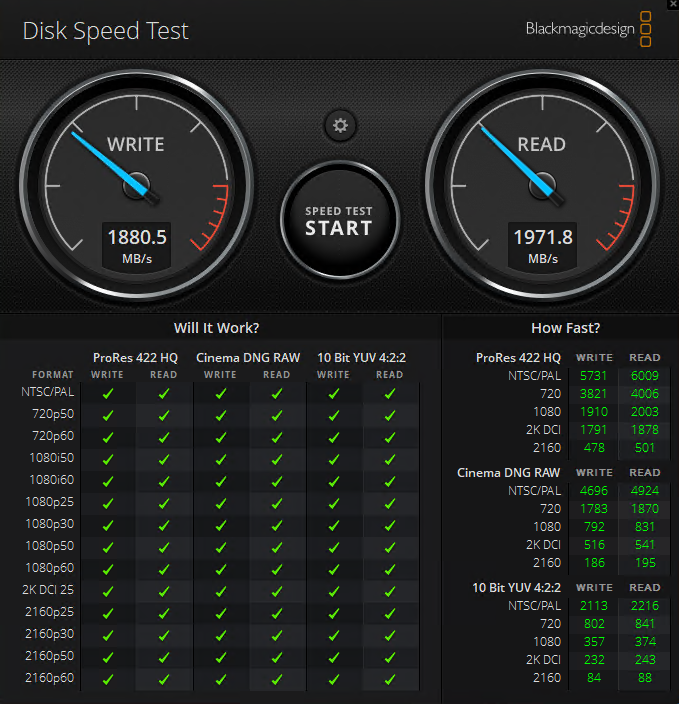
Given the lower rated speeds of the Intel 665p 1TB, we brought this test back out of retirement just to make sure it qualifies. Thankfully the 665p has no issues with any of the tested formats.
CrystalDiskMark 7.0.0 x64
CrystalDiskMark is used as a basic starting point for benchmarks as it is something commonly run by end-users as a sanity check.
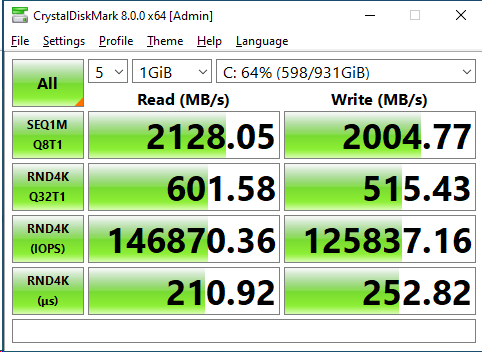

The Intel 665p 1TB lands close to the bottom of our charts, and yet still manages to slightly exceed the rated sequential performance targets.
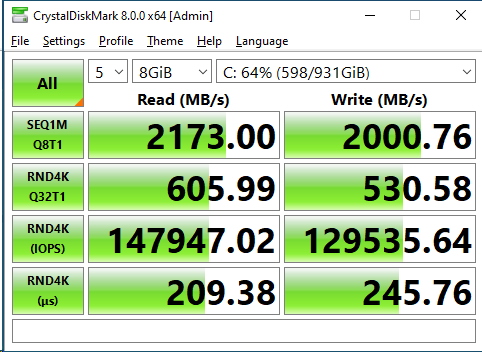
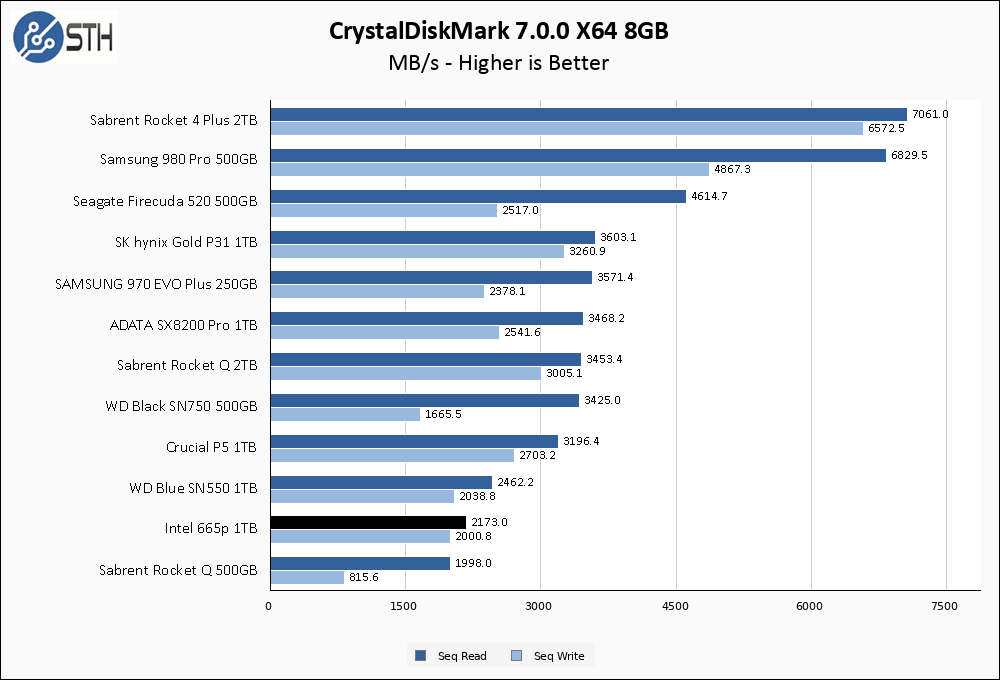
Thankfully, moving to the larger 8GB test has no impact on the performance of the 665p. Of note here is the comparison point of the Sabrent Rocket Q 500GB, which is the only other low capacity QLC SSD we have looked at and perhaps the fairest comparison point on our charts.
ATTO Disk Benchmark
The ATTO Disk Benchmark has been a staple of drive sequential performance testing for years. ATTO was tested at both 256MB and 8GB file sizes.
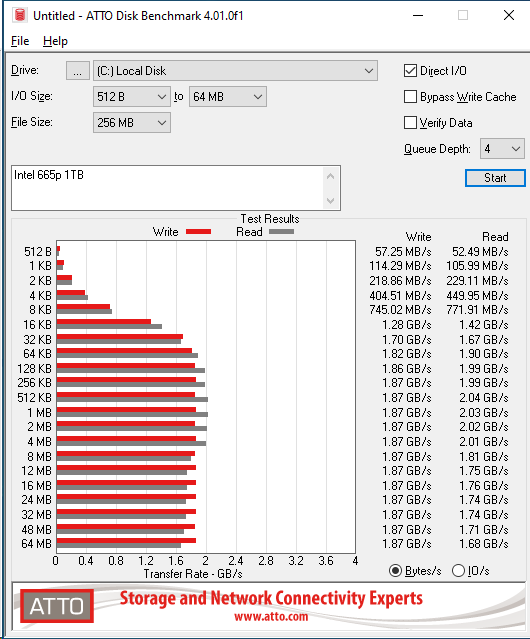
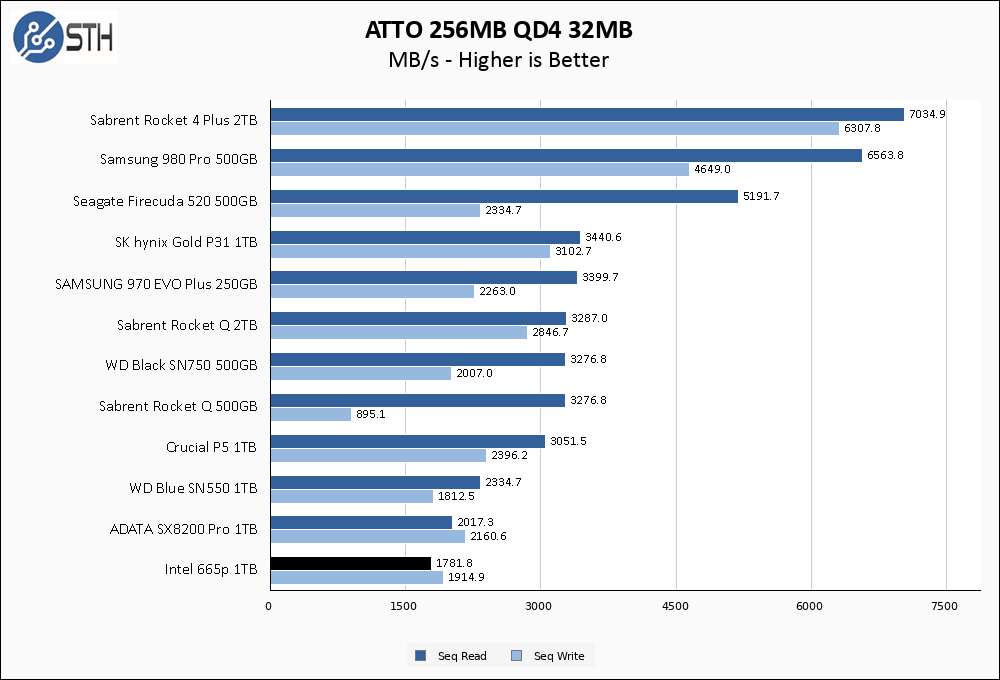
While the Intel 665p 1TB managed to edge out the Sabrent Rocket Q 500GB in CrystalDiskMark, the same cannot be said for ATTO. The performance benchmarks are now slightly below the rated 2000/2000 for reads/writes.
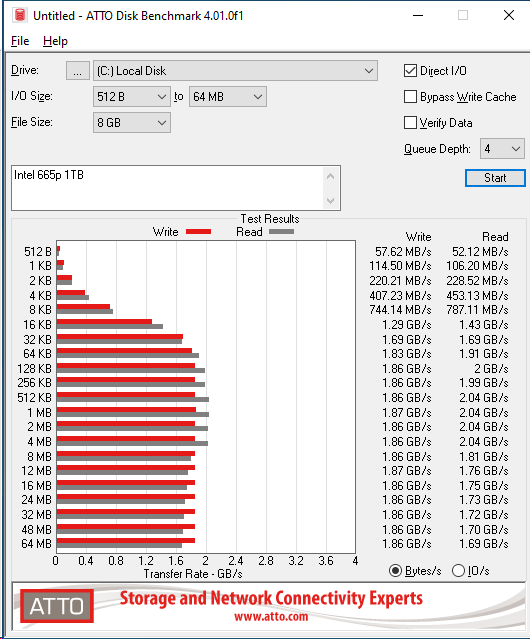
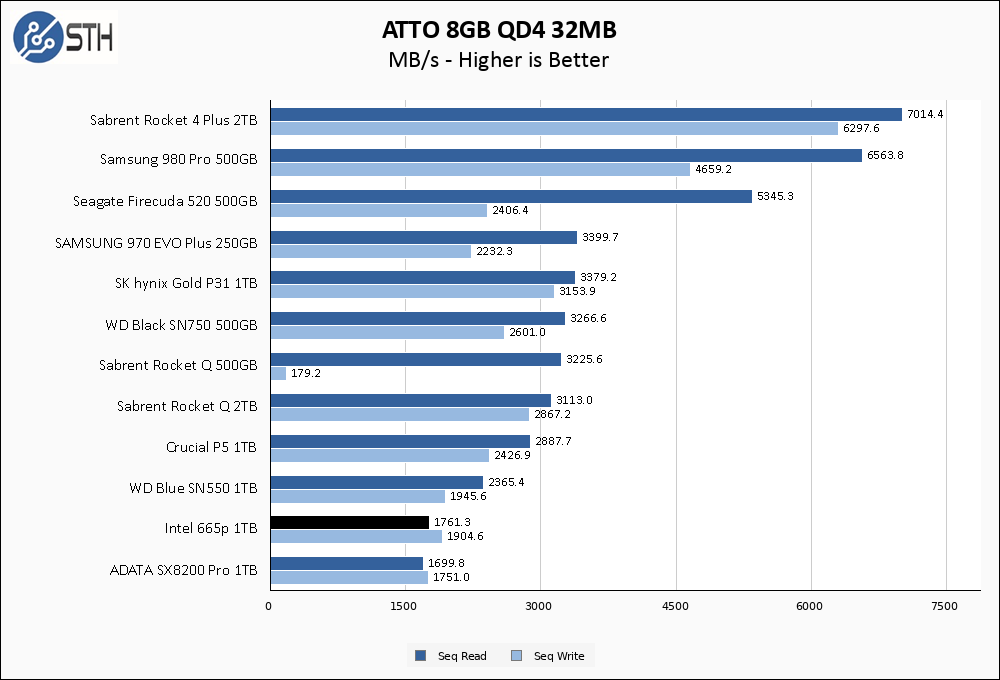
The raw performance of the Intel 665p 1TB holds steady when moving to the larger ATTO test, which allows it to catch up with the ADATA SX8200 Pro 1TB. As we noted in that review, the ADATA SX8200 can have multiple controllers, so see that review for more details.
Anvil’s Storage Utilities
Anvil’s Storage Utilities is a comprehensive benchmark that gives us a very in-depth look at the performance of drives tested. This benchmark was run with both a 1GB and 8GB test size.
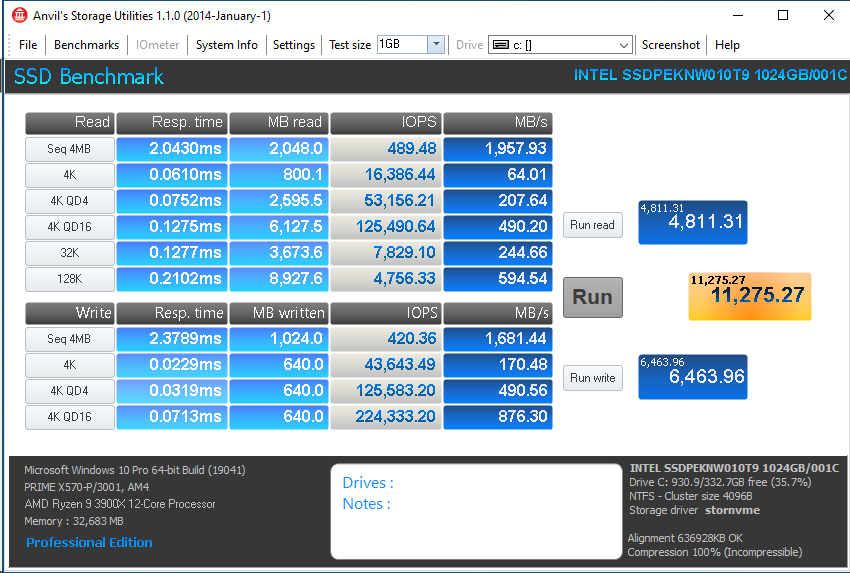
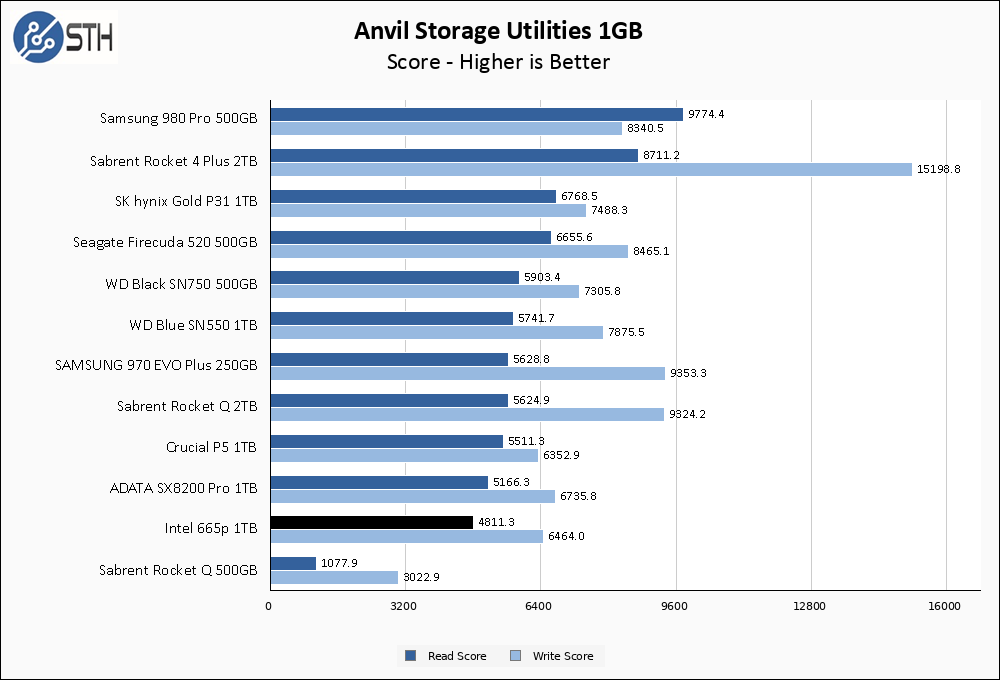
Continuing the trend of riding near the bottom of the chart, the 665p manages to outpace the smaller Rocket Q 500GB by a good margin in Anvil.
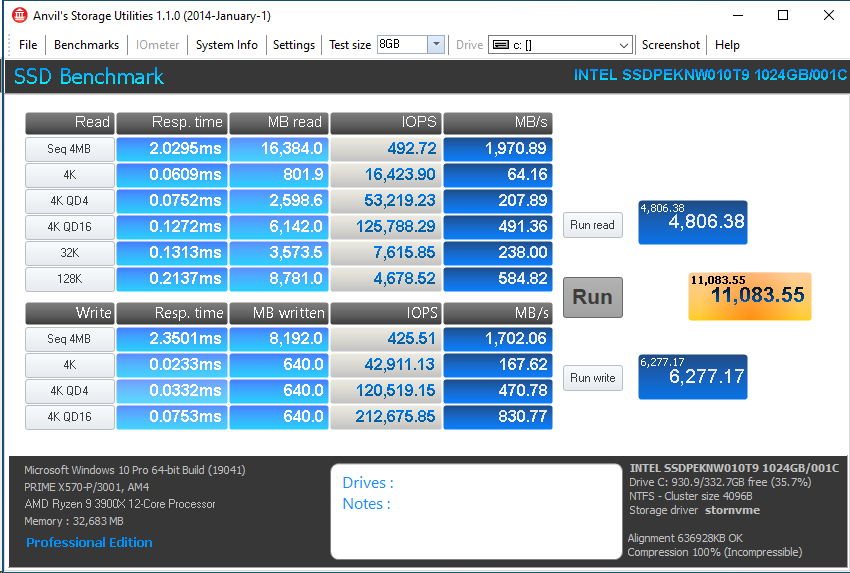
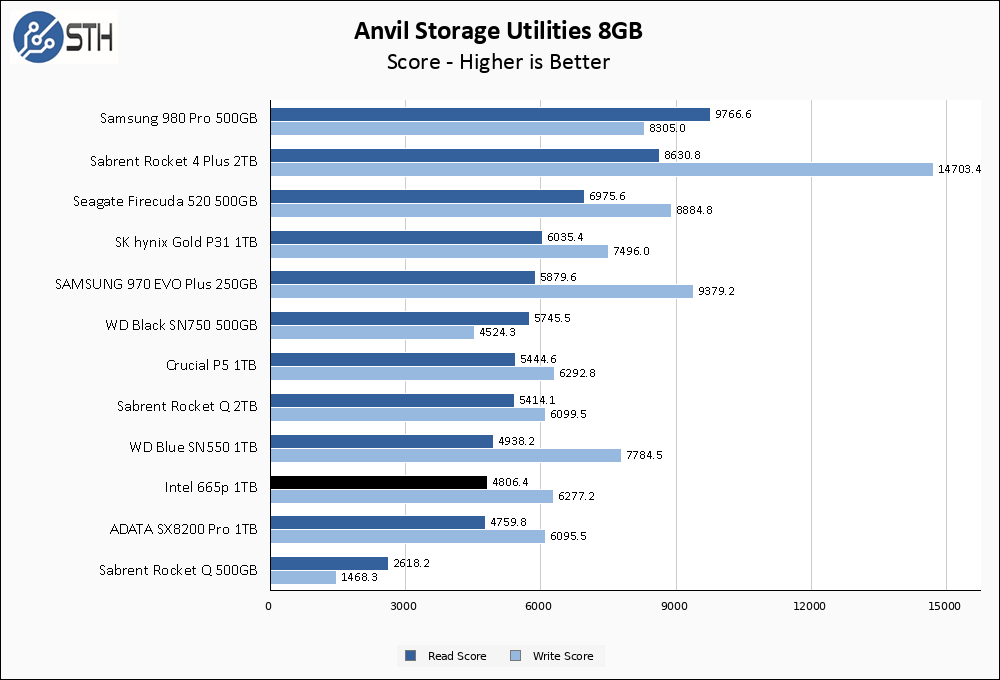
Once again, the trend of being completely consistent on the larger tests continues, with the 665p holding steady. As a result, once again the ADATA SX8200 Pro 1TB falls victim to the steady performance of this Intel drive.
AS SSD Benchmark
AS SSD Benchmark is another good benchmark for testing SSDs. We run all three tests for our series. Like other utilities, it was run with both the default 1GB as well as a larger 10GB test set.
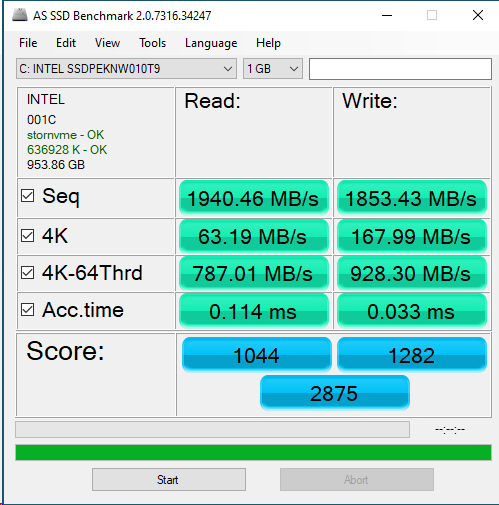
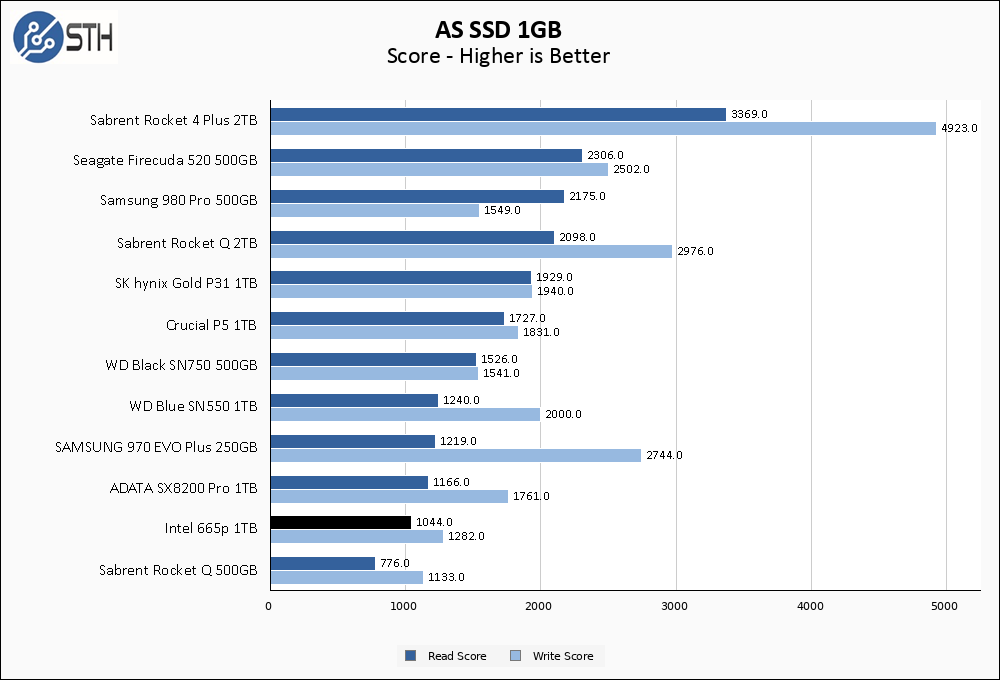
In the 1GB ASSSD test, the Intel 665p 1TB returns holds its now-traditional second-from-last spot, just edging out the Sabrent Rocket Q 500GB.
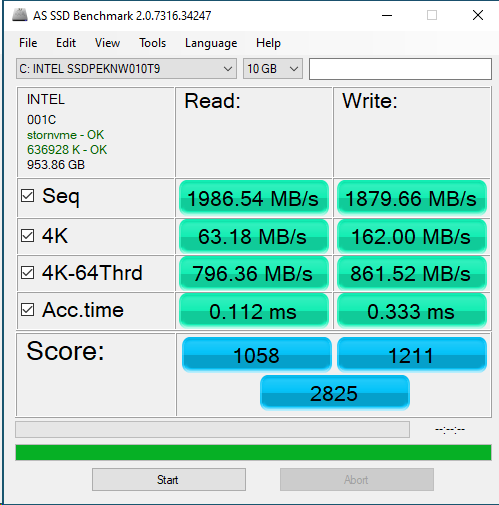
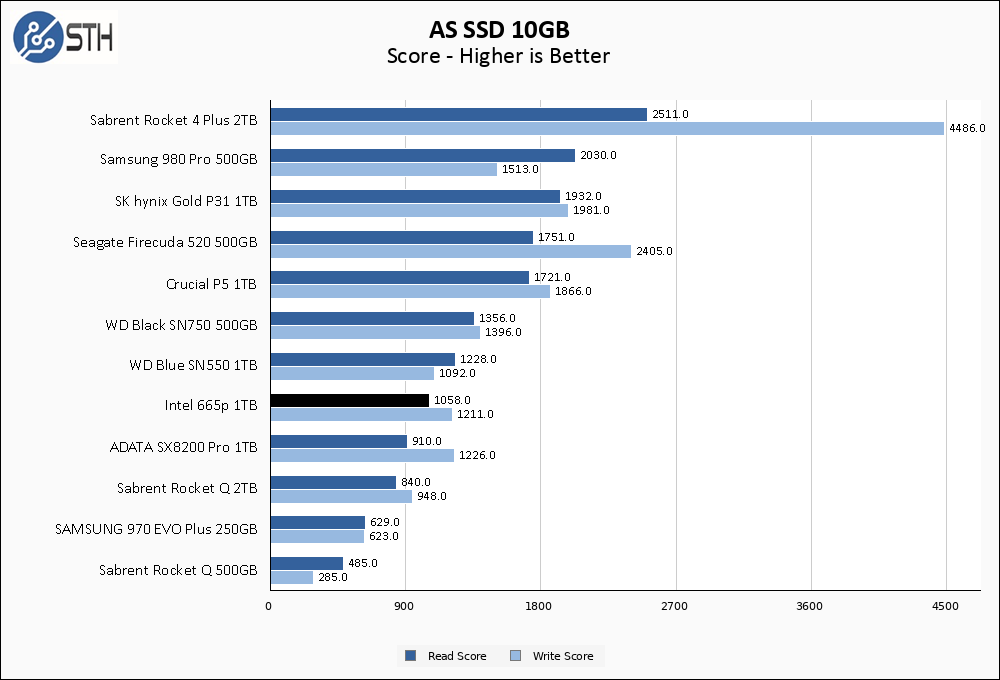
The larger AS SSD test proves to be the best showing yet for the Intel 665p, where it manages to move up three spots in the benchmark chart simply by not losing any performance on the larger test. The resilience of this drive is quite remarkable, and it may hold the record in my testing for the drive least affected by the larger benchmark sets.
SPECworkstation, thermals, and our conclusion are up next.




great detailed review! it looks like 665p is already approaching end of life.
670p is on the way.
Yes. We want to look at the 670p, but having the 665p in our benchmark database would be useful when that time comes, so we went ahead and looked at it as well!
No mention of power consumption?
Power consumption active is .1 Watt
Idle is .04 watt it’s a nvme what more do yt want.
I’m a fan, both of the drives in my build are 665ps.
Endurance isn’t high, sure, but that’s planned obsolescence. It only needs to survive until the model as a whole becomes obsolete.
For CrystalDiskInfo drive attributes screenshots, would you be willing to change the view to decimal from hex? Function > Advanced Features > Raw Values > 10 DEC
Quoting: “This drive comes equipped with 2x 512GB packages, for a total of 1024GB of NAND. With 1000GB accessible to users, this leaves 24GB reserved by the controller.”
This is confusing. I’m pretty sure the two NAND packages would 512 GiB (binary: 512 x 2^30 bytes) not 512 GB (decimal: would be 512 x 10^9 bytes), for a total of 1024 GiB = 1 TiB (2^40 bytes). As far as I know (not an expert), this is how NAND goes.
Now, if the usable capacity is actually 1000 GB = 1 TB (decimal: 10^12 bytes) which seems plausible, that would ~99 GB (= 2^40 – 10^12) reserved by the controller, not 24GB.
Even if the usable capacity was 1000 GiB (neither 1 TiB nor 1TB), that would be ~26 GB (= 2^40 – 1000 x 2^30), still not 24 GB (and neither 24 GiB, yet close).
To be fair, even Intel’s product brief is unclear about this and is mixing both binary and decimal units, while using decimal prefixes for both. The advertised capacity, for example, is (I’m quoting) “1024 GB (1 TB)”. I’m lost.
Bottom line is: let’s try to use the right prefixes and things will get easier. This isn’t just nitpicking: at the terabyte or tebibyte scale, this is starting to make a difference and understanding overprovisionning is key to appreciate SSD endurance (and pricing).
G, the official and actual capacity is 1024GB (not GiB). 1TB+2.4% bonus.